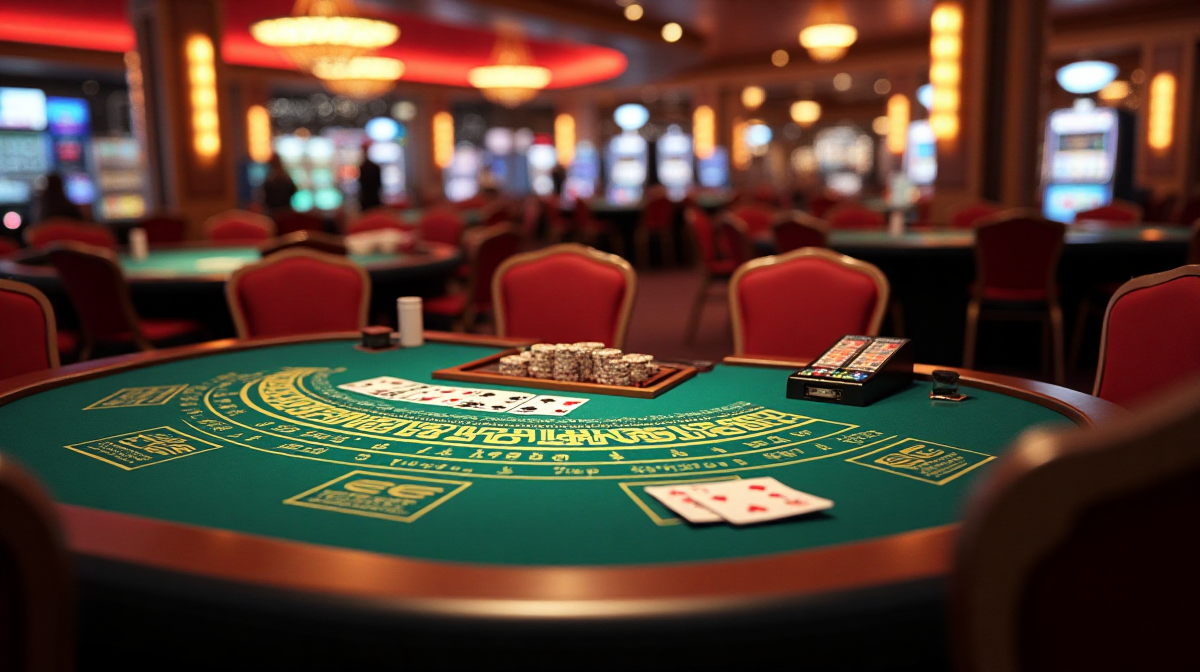Blackjack Rules: Master the Game in 5 Steps
Introduction to Blackjack
What is Blackjack? A Brief Overview
Blackjack, also known as 21, is a classic casino game where players compete against the dealer to get a hand value as close to 21 as possible without exceeding it. It’s a game of skill and strategy, offering a relatively low house edge compared to other casino games. Many enjoy combining their love for sports with casino games, and platforms like betking sports often offer both.
Why is Blackjack So Popular?
Blackjack’s enduring popularity stems from its simplicity and the element of control players have over their decisions. Unlike games purely based on chance, Blackjack allows players to make strategic choices that impact the outcome. Furthermore, the quick pace of the game and the potential for significant payouts keep players engaged. If you're looking to access the game, knowing how to betking sports login is the first step.
Blackjack Terminology: Key Words You Need to Know
Before diving into the rules, let’s familiarize ourselves with common Blackjack terminology. Hit means to request another card. Stand means to end your turn without taking another card. Double Down allows you to double your initial bet in exchange for one more card. Split allows you to separate a pair of cards into two separate hands. “Bust” signifies going over 21. Understanding these terms is crucial, especially if you’re considering betking sports prediction strategies that might extend to casino games.

Step 1: Understanding the Goal & Card Values
The Objective of Blackjack – Beating the Dealer
The primary objective in Blackjack is not necessarily to get 21, but to beat the dealer. You can do this by having a hand value higher than the dealer’s without exceeding 21, or by the dealer busting (going over 21) while you have a hand of 21 or less.
Card Values in Blackjack
Cards in Blackjack have specific values: Numbered cards (2-10) are worth their face value. Jack, Queen, and King are each worth 10. An Ace can be worth either 1 or 11, depending on which value benefits the hand more.
Blackjack Hand Values & How to Calculate Them
A hard hand is one where the Ace is counted as 1, or there is no Ace at all. A soft hand is one where the Ace is counted as 11. The value of a soft hand can change without risking a bust. For example, a hand of Ace-6 can be either 7 (hard) or 17 (soft).
Step 2: Gameplay - The Basic Flow of a Blackjack Round
The Deal: How Cards Are Distributed
A Blackjack round begins with players placing their bets. The dealer then deals two cards to each player face up, and two cards to themselves – one face up and one face down (the hole card).
Player Turns: Hit, Stand, Double Down, Split
Players take turns acting on their hands. You can:
When to Hit
Hit if your hand value is low and you want to get closer to 21.
When to Stand
Stand if you are satisfied with your hand value and believe it is likely to win.
Understanding Double Down
Double Down by doubling your bet and receiving only one more card. This is often a good strategy with a strong starting hand.
When and How to Split Pairs
Split Pairs if you have two cards of the same rank. You'll play each card as a separate hand, requiring an additional bet equal to your original wager.
Dealer’s Turn: Rules and Restrictions
After all players have finished their turns, the dealer reveals their hole card. The dealer must hit if their hand value is 16 or less, and must stand on 17 or more.
Step 3: Key Blackjack Rules - Payouts & Side Bets
Winning Hands & Payouts
A Blackjack (Ace and a 10-value card) pays out at 3:2. A hand of 21 also wins, but typically pays out at 1:1. If your hand value is higher than the dealer's without busting, you win at 1:1. Exploring options like casino blackjack can be rewarding.
Busting & Losing Hands
If your hand value exceeds 21, you bust and automatically lose your bet, regardless of the dealer's hand.
Push – What Happens?
If you and the dealer have the same hand value, it's a push, and your bet is returned.
Common Side Bets – Risks and Rewards
Some casinos offer side bets, like Insurance (betting the dealer has Blackjack) or Perfect Pairs (betting your first two cards are a pair). These bets have higher house edges and are generally not recommended.

Step 4: Basic Blackjack Strategy - Improving Your Odds
What is Basic Strategy? The Foundation for Winning
Basic Strategy is a mathematically derived set of rules that tells you the optimal play in every situation, based on your hand and the dealer's upcard. It doesn't guarantee a win, but it minimizes the house edge.
Basic Strategy Chart Explained
Basic strategy charts for hard hands provide guidance on whether to hit, stand, double down, or split based on your hand value and the dealer's upcard.
Basic Strategy Chart Explained
Similar charts exist for soft hands, taking into account the Ace's flexibility.
Why Basic Strategy Works and its Limitations
Basic strategy works by maximizing your expected return over the long run. However, it doesn't account for card counting or other advanced techniques.
Step 5: Etiquette & Advanced Considerations
Blackjack Etiquette: Do's and Don'ts at the Table
Be mindful of other players. Avoid giving advice, and always handle your chips respectfully.
Card Counting
Card counting involves tracking the ratio of high to low cards remaining in the deck to gain an advantage. It's a complex skill and is often frowned upon by casinos.
Bankroll Management: Playing Responsibly
Set a budget before you start playing and stick to it. Never bet more than you can afford to lose. Many platforms like betking sports promote responsible gambling.
Where to Play Blackjack
Blackjack is available both online and in land-based casinos. Online Blackjack often offers lower minimum bets and greater convenience, while land-based casinos provide a social atmosphere. Remember to check the blackjack rules of the specific casino you’re playing at.

